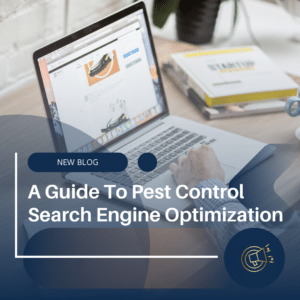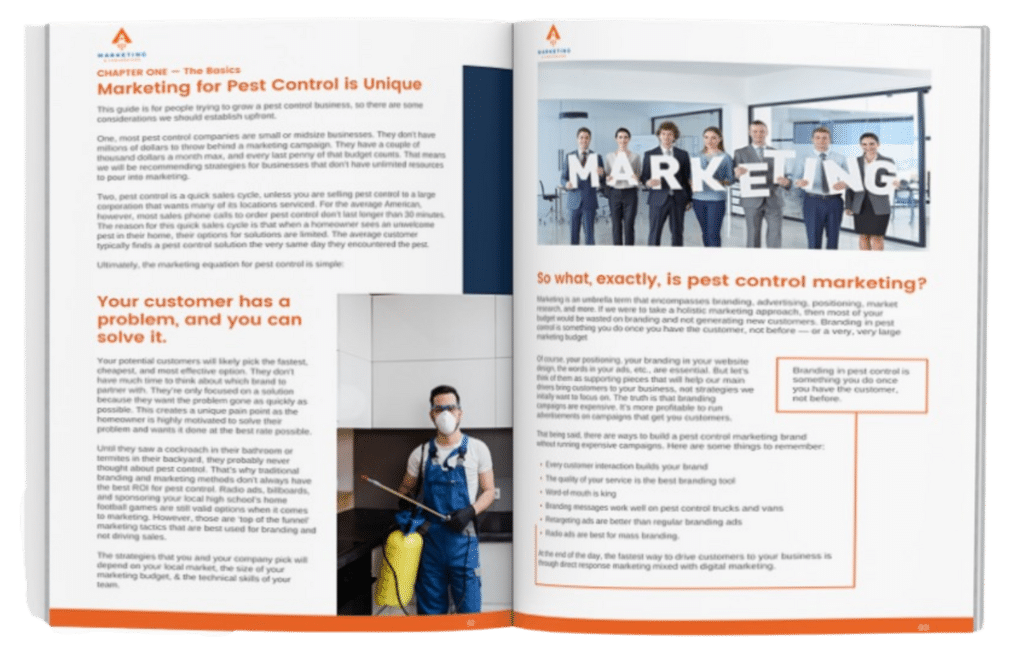
How to pick a marketing agency
How to pick a marketing agency Here’s a truth that can be hard to swallow: Even the best product or service in the world won’t
On-page SEO is an essential factor in ranking well on search engines. It helps search engine crawlers understand the content of a page and optimizes the content so users can find it quickly. It is also essential to ensure your content is easy to understand and meets users’ needs. Optimizing pages so search engines easily find them is crucial to getting more visitors to your website and increasing your overall visibility.
Do you want to make sure your pest control business is a success? Keyword research is an essential tool to help you get there! Through keyword research, you can identify which words and phrases your potential customers use when searching for products or services related to your business. This helps you optimize and tailor your SEO and PPC campaigns to reach the most relevant audience. When doing keyword research, you will want to keep the following in mind:
1. Start with Search Volume: Start your keyword research by looking into the search volume for various keywords related to your niche. This will give you an initial idea of which keywords are the most popular and most likely to bring organic traffic to your website. It is useless to rank for a keyword that has zero search volume, after all.
2. Analyze the Competition: Analyze the competition for the keywords you’re considering. Check out the top-ranking sites for each keyword and determine if you can compete with them.
3. Use Keyword Tools: Utilize keyword research tools such as Google Keyword Planner, Ahrefs, & Moz Keyword Explorer to find additional keyword ideas and helpful metrics. This will help you determine which keywords have high search volume and low competition.
4. Include Long-Tail Keywords: Remember to include long-tail keywords in your research. These are longer and more specific keywords and often have less competition but bring in site visitors that are closer to your target market.
5. Track Your Progress: Finally, track your progress and make adjustments as necessary. Monitor your keyword rankings and adjust your SEO strategy as needed.

Headings, or h tags, are the titles and subtitles used to organize content on a web page. An h1 tag is the main page heading and should accurately describe the page’s content. Subsequent h tags (h2, h3, h4, etc.) are used to further organize the page content into sections, subsections, and other categories. They should be used to introduce major topics and then broken down into more complex topics for the reader. When used together, h tags help create an organized structure for the page, allowing readers to quickly scan the content and find the information they need.
Heading tags are an essential part of SEO because they provide structure and hierarchy to a web page. They also allow search engines to identify the main topics of a page quickly. By using heading tags to structure content, search engine robots more easily index and crawl webpages. Furthermore, heading tags can be used to help search engines understand the context of a web page, which can help improve its ranking. Lastly, heading tags allow readers to quickly identify the relevant sections of a webpage, making it easier for them to find the information they are looking for.
Mobile-friendly websites are designed to look good and function correctly on any device, regardless of size or type. Mobile-friendly websites also feature larger fonts and buttons and simplified navigation and menus that are easy to use on a mobile device. Furthermore, mobile-friendly websites are optimized for mobile search engines, making them more likely to appear higher in mobile search results.
Mobile-friendly websites are essential for SEO because they ensure that users have a positive experience when they visit a website on a mobile device. As a result, Google ranks websites higher in search results when they are optimized for mobile devices. Additionally, mobile-friendly websites help to increase user engagement, which is an essential factor for SEO rankings. Finally, mobile-friendly websites improve page load speeds, another vital factor for SEO rankings.
The three most important things that make a website mobile-friendly are:
1. Responsive Design: Responsive design ensures that a website automatically adjusts to the user’s screen size and resolution to provide an optimal viewing experience. An improved user experience on mobile devices can also lead to higher engagement and conversions.
2. Optimized Content: Optimizing content for mobile devices is key for providing a good user experience. To do so, you will want to avoid large images, long paragraphs of text, and other elements that can be difficult to view on small screens.
3. Fast Load Times: Page load times are essential for SEO rankings and providing a good user experience. The main reason that fast load times are crucial is that most people on a mobile device will also be using their mobile data and not be connected to wifi. You can achieve fast load times by compressing images and other elements on the page.
Updating your website content regularly for SEO is vital because it helps to keep your content fresh, relevant, and up-to-date for users and for search engine crawlers. New content helps to improve your website’s ranking on search engine results pages (SERPs) by providing more relevant information for users and indicating that your website is active and updated. Additionally, regularly updated content allows you to take advantage of new search engine optimization (SEO) methods and techniques and helps build trust with your audience. But coming up with content ideas can be complex and time-consuming. Here are ten ways to update your content that will help you rank on Google and other search engines

1. Publish fresh blog posts regularly.
2. Update existing content with new information and insights.
3. Add new images and videos.
4. Update your product pages frequently.
5. Create regular news updates.
6. Create and post polls.
7. Add new social media content and campaigns.
8. Host webinars and other events.
9. Feature customer stories and testimonials.
10. Add new content to your resource library.

How to pick a marketing agency Here’s a truth that can be hard to swallow: Even the best product or service in the world won’t
To ensure that your marketing dollars are contributing to your pest control company’s growth, You have to ensure profitability. There are a lot of ways to ensure profitability but in this blog post we will tackle just three of them and if you implement them early, you are a lot more likely to fill your routes with ideal customers that love to live pest free.

Growing a pest control business involves online strategies. Partnering with a pest control digital marketing agency can enhance your online visibility further.

Marketing automation is a digital marketing strategy that uses technology to automate repetitive marketing tasks and workflows.

Customer journey is often visualized through a concept known as the digital marketing funnel. This visually represents a potential customer’s stages before purchasing or taking a desired action.

Most of the time, the company won’t have to pay for anything in email marketing. They can easily build their contact lists on their website when their visitors subscribe to them. They can also buy contact lists from other businesses, which can only cost a few bucks for thousands of emails. So if you’re considering doing email marketing for your pest control business, below are 10 tips you can apply to your campaign.

Grab your free copy of our Ultimate Pest Control Marketing Guide and uncover 10+ years of pest control marketing secrets.
Our Promise
We love working with and growing local businesses. If we can’t help, we’ll send you to someone who can.